D’Angelo Lovell Williams appears in the majority of the photographs in Contact High, but the book isn’t a story of their life, the Mississippi-born artist assures me. Instead of a visual autobiography, Contact High can be imagined as a collection of snapshots from an actor’s career: different roles across multiple projects, perhaps united in theme, with a rotating cast of supporting characters. And despite the various guises, a few distinct features stand out: the variety of full-body poses, the connection to the land and vegetation, the air of self-destruction. D’Angelo’s unbroken stare into the camera becomes this set’s defining quality.
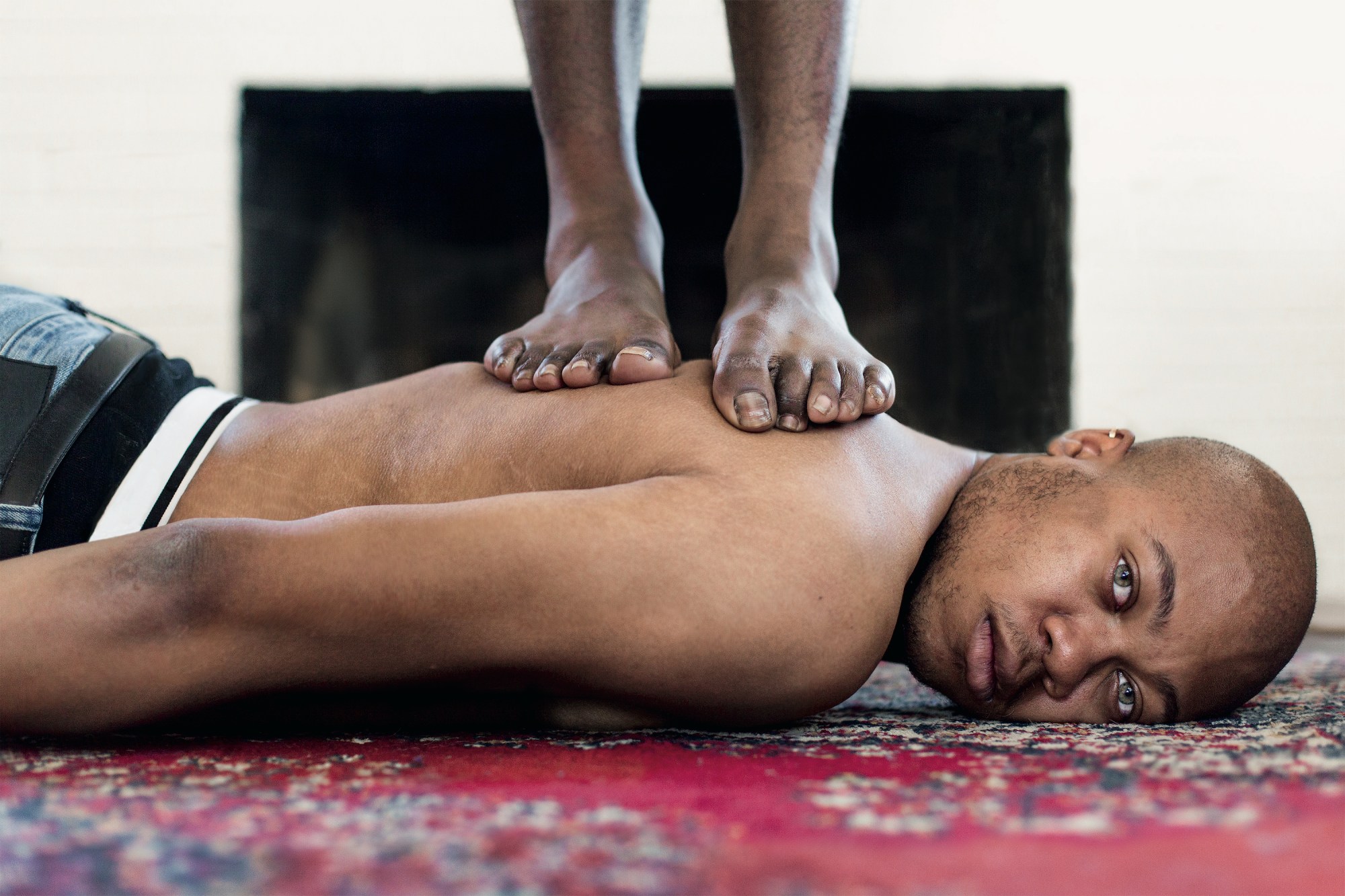
Contact High began with a portfolio of 32 images put together with the team at Higher Pictures Generation, the Brooklyn gallery specialising in early-career photographers (and where D’Angelo has exhibited on four occasions). These photographs, made mostly during and after D’Angelo’s time as a photography MFA student at Syracuse University, showcase theatricality and gesture in the self-portraits, as well as the tensions and tenderness of companionship in the multi-subject works. A sequence of shadowy nudes shows subjects lying atop each other on a sofa, or sharing a secret while seated on wooden stairs. In the second shot, the arms of a third figure stretches through the steps and holds the pair’s legs, a reach of security, or perhaps entrapment.
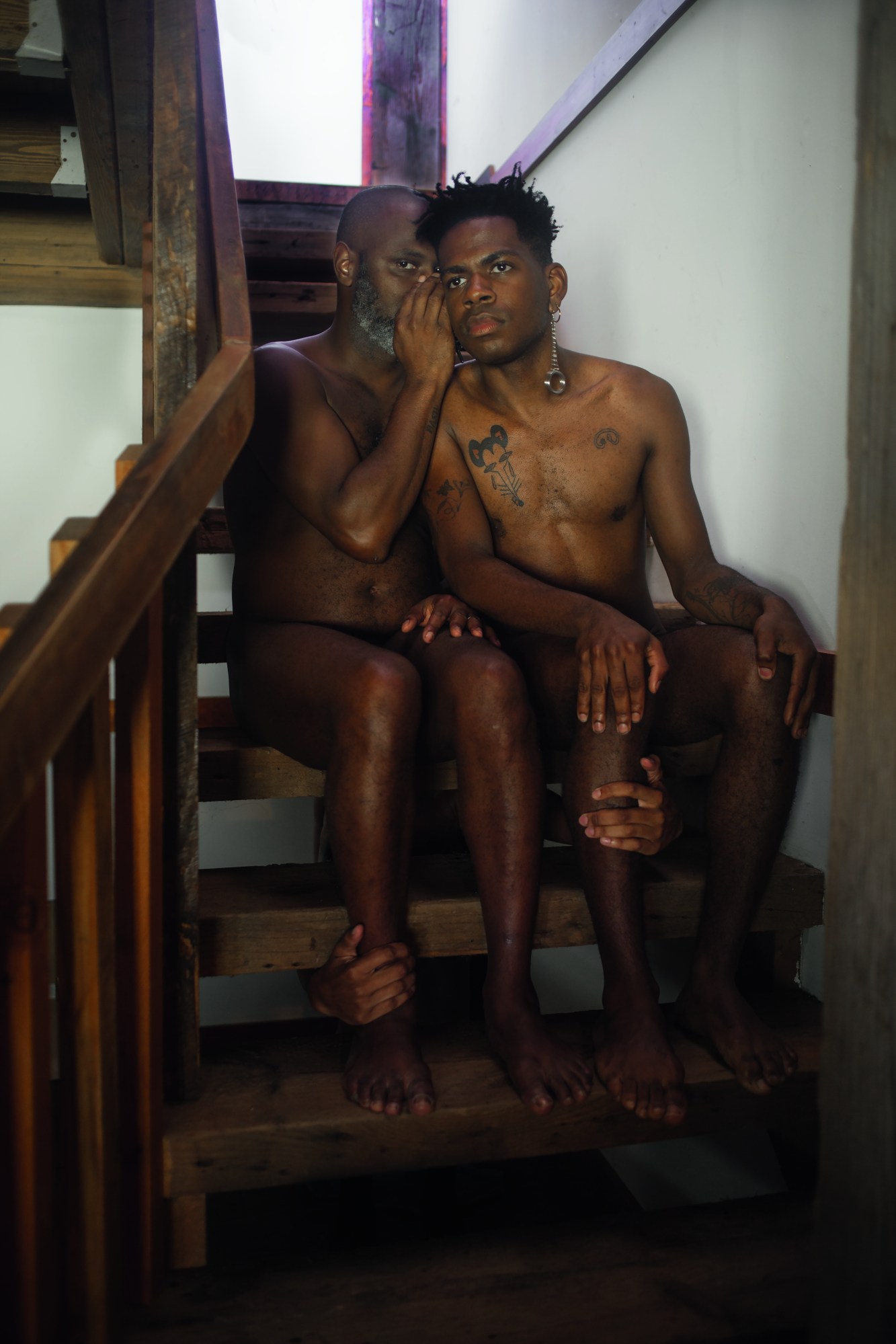
D’Angelo also decided to include works made during their BFA at Memphis College of Art, which had never been shown before. At this point, their self-portraiture dealt more with obfuscation and manipulation, they explain. “My work was surreal: wrapping gauze around my face, changing the shape of my body, magnifying my body a lot with different lenses.” This concealment motif does appear in Contact High, often in shots where subjects are engaged in physical intimacy. One shot, “The Lovers”, a recreation of René Magritte’s 1928 oil painting of the same name, has its two subjects clasping one another’s necks, kissing. In place of the white cloth Magritte painted, the pair instead wear black durags turned backwards. This allusion to the traditional history of art and the anonymity of its subjects begs the question: whose story is D’Angelo telling?
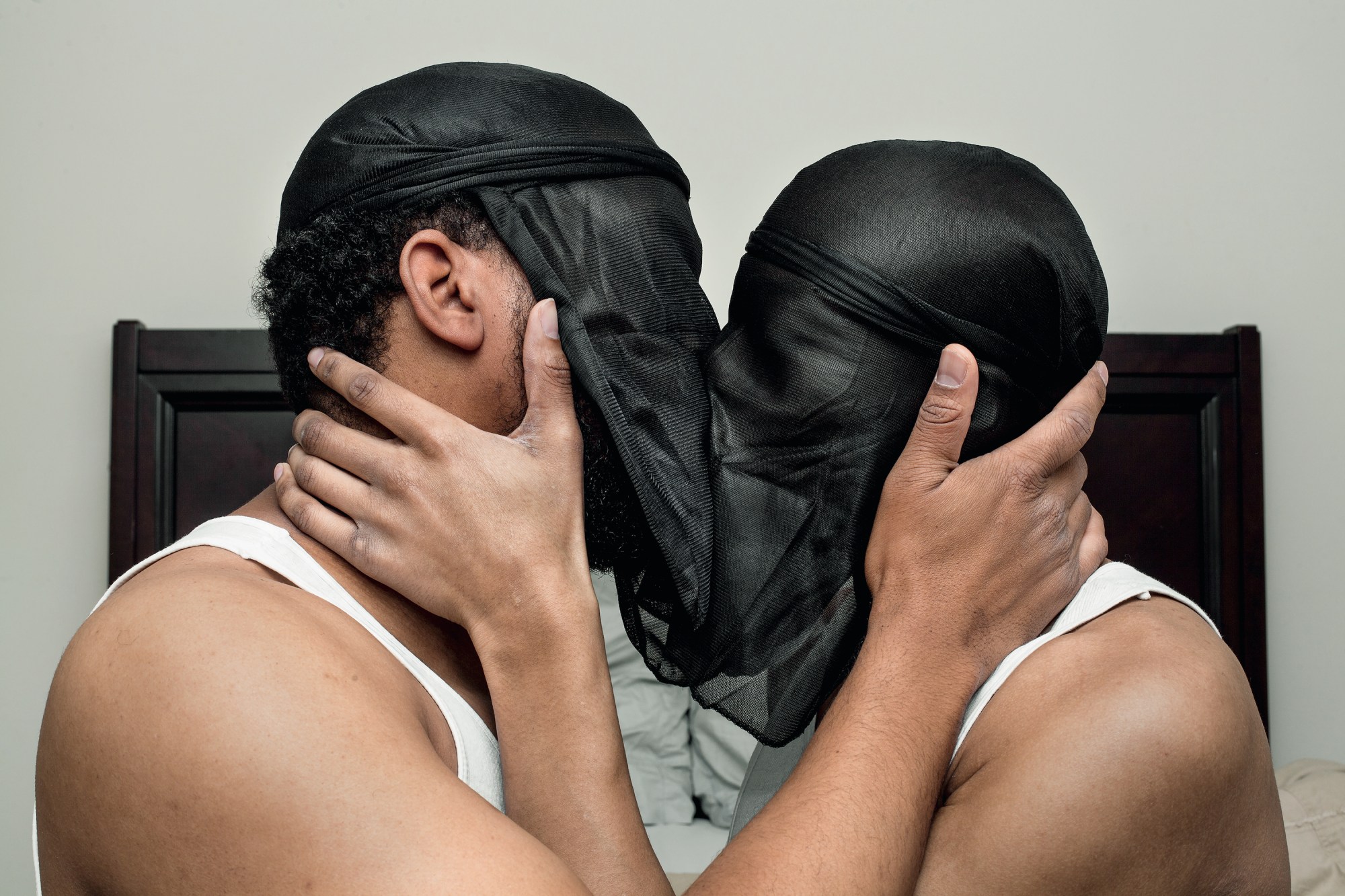
A collection of self-portraits in which queer Black life is explored so intensely could be hailed primarily as a feat of positive representation: a biopic of struggle and resistance. Not Contact High. “I wasn’t trying to document my own life,” D’Angelo explains. “I want to be reflective of the communities that I feel a part of, but it’s not my job to show everything.” This revelation de-centres the artist from their own self-portraits, allowing the viewer to focus on the poses, settings and motifs in each shot: bouquets of flowers, a bottle of Bacardi, a long black sex toy. In one moment of circularity, D’Angelo’s own body becomes prop: they look down as they hold their penis, semen running down their leg. The whole scene is captured in a mirror: an apparition of autoeroticism made a spectacle. “I am inspired by things that are visual and poetic,” D’Angelo says. “Music, film, dance, things where people are performing, acting, reciting, emoting.” Sex — and the many facets of sexual behaviour — fall firmly within these categories.
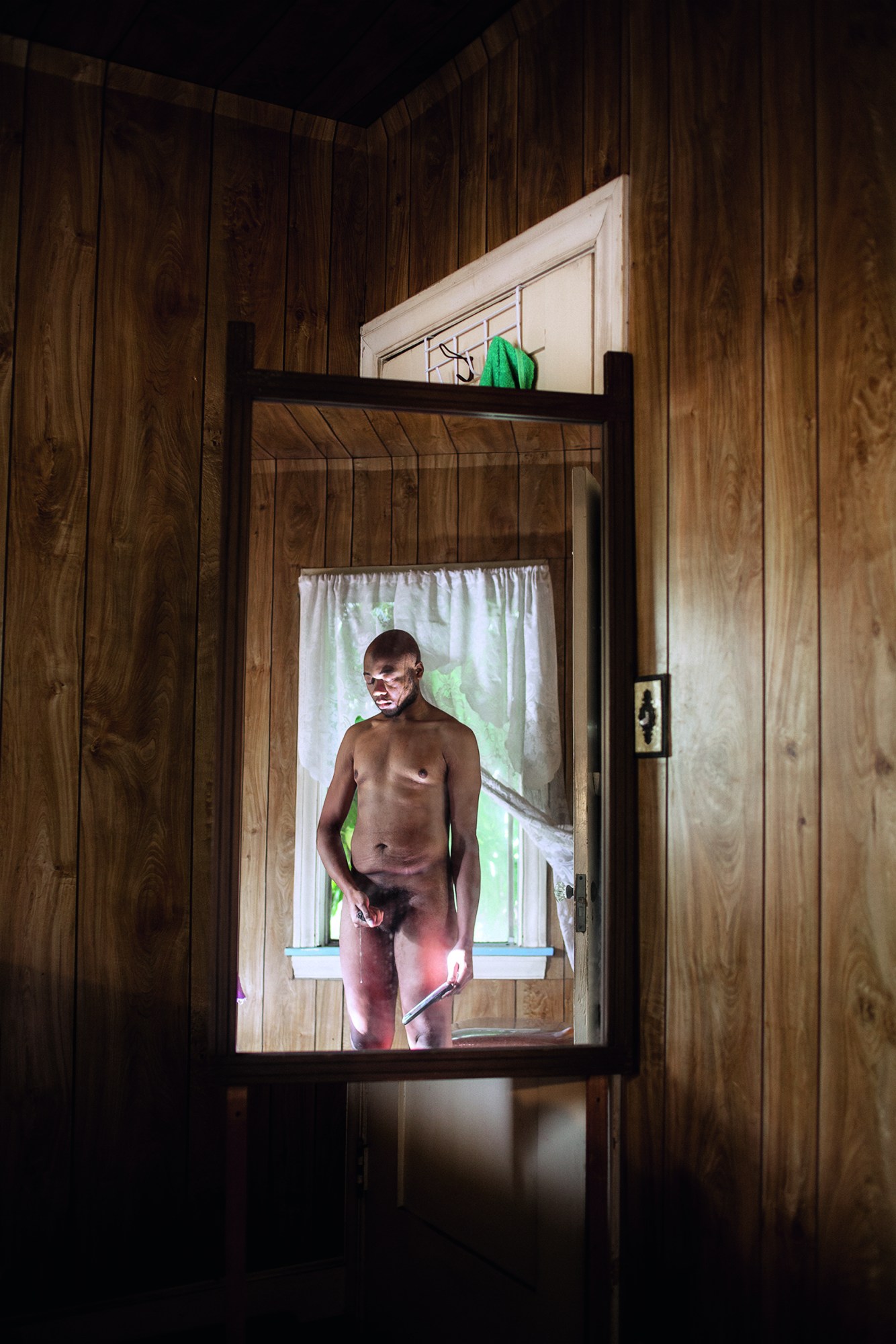
Another shot shows D’Angelo and their father arm wrestling. The tension between them (the artist has spoken previously about the unspoken difficulties around their father’s views on queerness) is physicalised in a familiar pose of masculine competition. But the photograph is by no means rooted in this singular narrative. Inviting readings around body image, colourism, ancestry and self-determination, D’Angelo’s scenes become starting points for common conversations among their Black and queer communities. Taking characters out of domestic settings and into the open also introduces the queer pastoral to the work, not unlike the photographs of Jess T. Dugan (who has also recently published a monograph with MACK). Vegetation engulfs subjects or acts as a luscious, beautified frame, while lakes and streams give bodies a buoyant quality.
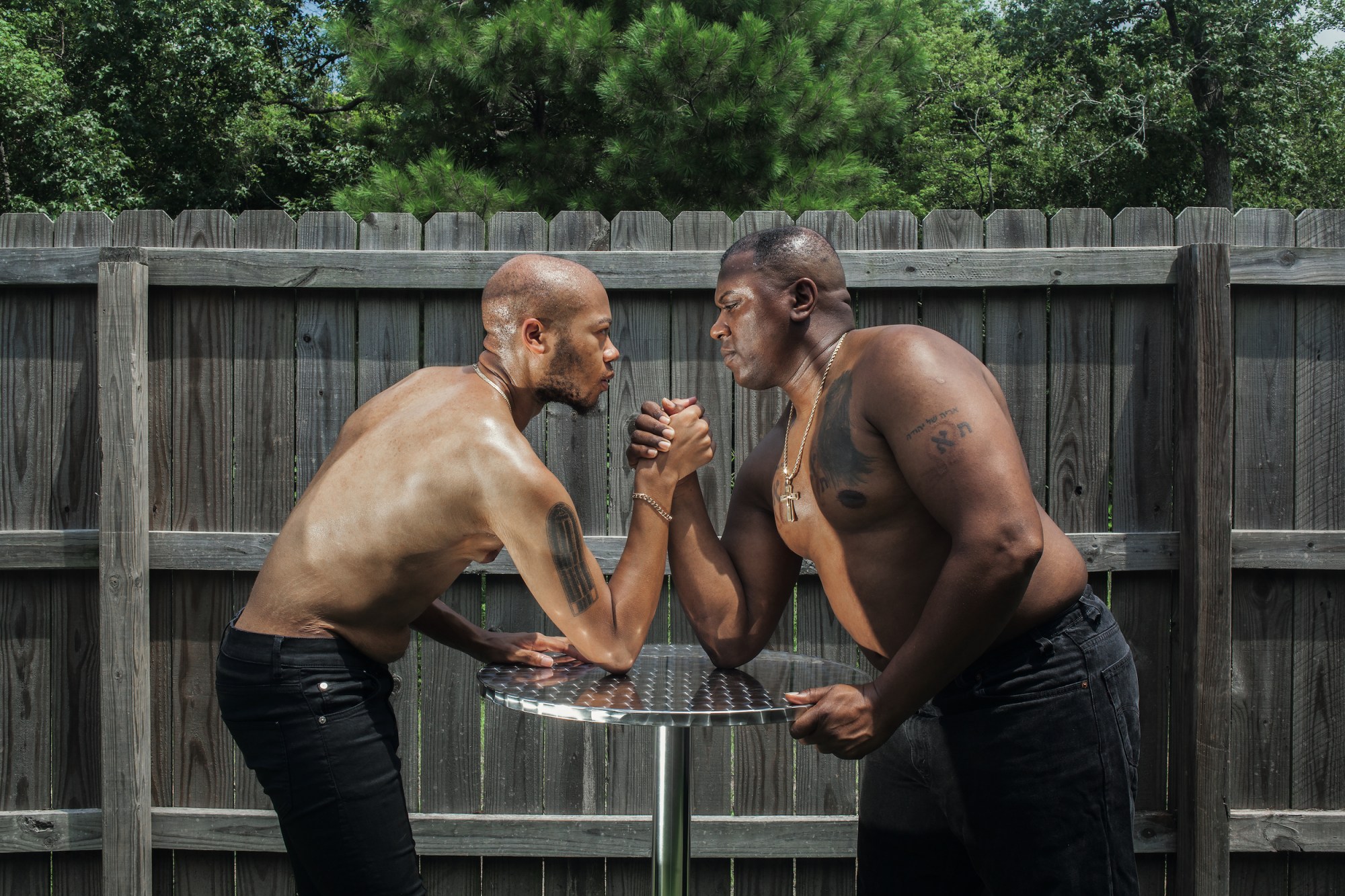
Writing in the book, the artist and filmmaker Tiona Nekkia McClodden suggests that queer and non-binary Black artists are able to create work which is both of and outside of this world, taking ordinary scenarios and elevating them beyond the real. D’Angelo’s work is “Black mundane surrealism,” she writes. “Recognisable yet a punch in the gut.” If the street photography of African American artists like Dawoud Bey (an inspiration of D’Angelo’s) helped show Black existence as aesthetically fertile, D’Angelo’s constructed scenarios push further — an insistence that Black self-love, relationships and futures benefit from a dose of imagination, even uncanniness. “Blow”, the book’s cover image, sees D’Angelo press a handgun deep into their mouth, its sexual overtones meeting almost-nihilistic symbolism.
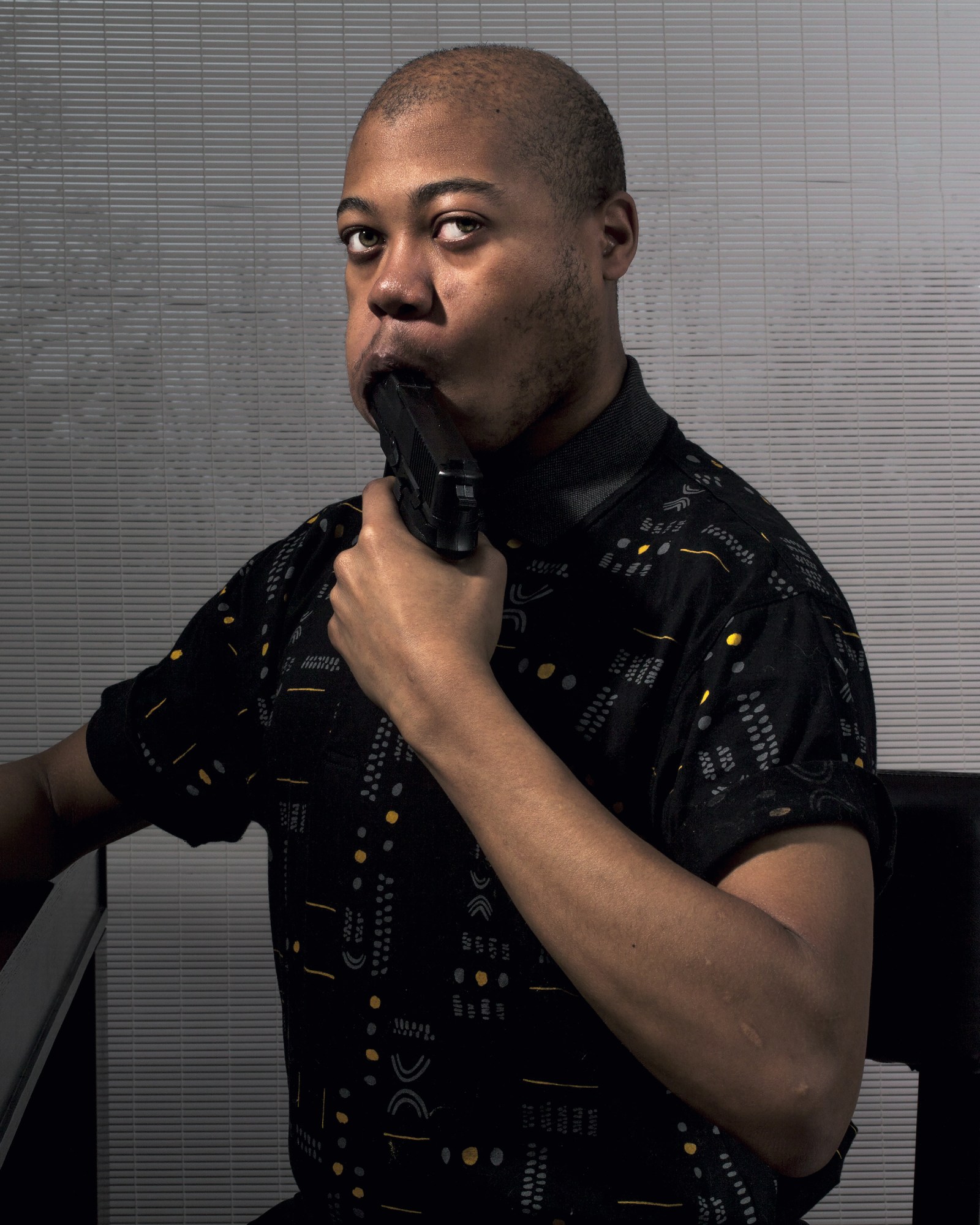
At the end of their first year at Syracuse, D’Angelo’s photography professors fed back that their self-portraiture was “pretty and lavish”: highly choreographed but lacking bite or subversion. “This work is too perfect; this work is too pretty,” the artist recalls of their feedback. “We want to see you get dirty.” Contact High more than satisfies these calls: a patchwork of fraught encounters, apprehensive intimacy, and queer power. D’Angelo remembers the professors asking them another question, a part-rhetorical probe at the future of their art. They would say: “Will you be able to photograph yourself forever?” D’Angelo says. They never really were in the first place.
‘Contact High (2022)’ by D’Angelo Lovell Williams published by MACK
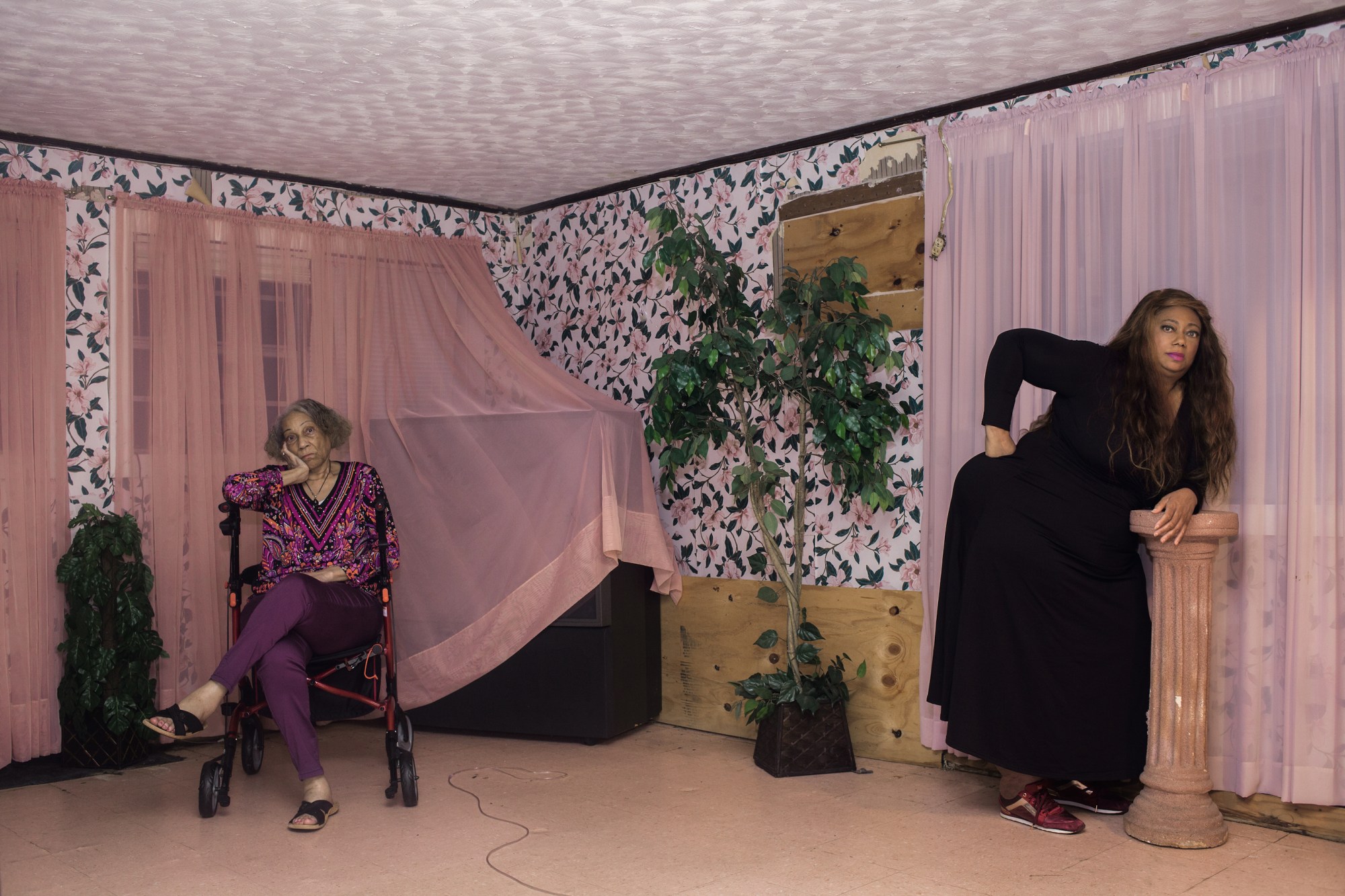
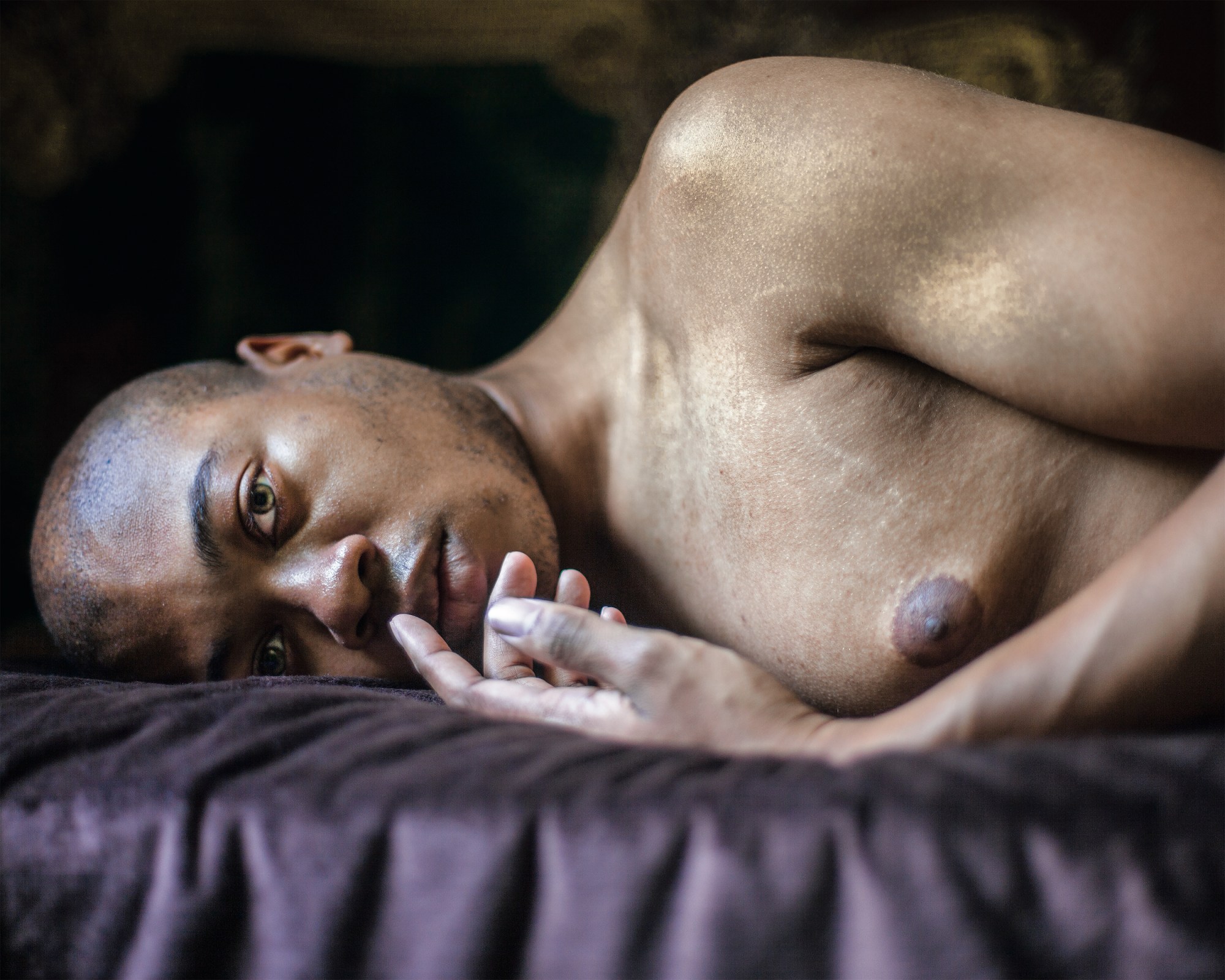
Credits
Photography courtesy of D’Angelo Lovell Williams and MACK
